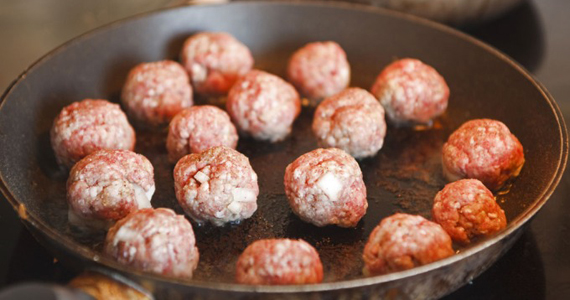
Mince
Minced meat is a well recognised part of Australian food culture (just think meat pies). Beef is the most common kind of mince found in our supermarkets, however other popular varieties such as pork, chicken and turkey offer us a wide culinary variety. A versatile ingredient suitable for anything from burgers, meatballs and pasta sauces, to pies, pastries and chilli con carne, there’s no reason mince need go to waste with careful storage and a little forethought.
Store |
Store mince in your fridge for up to 2 days. After this time, it will need to be transfered to your freezer to ensure it stays safe to eat. Mince can be kept in your freezer until you’re ready to eat.
The bottom of your fridge is the best place to store mince, as this is the coldest part. Keeping mince here also reduces the chance of it dripping onto other items in your fridge and potentially spreading bacteria.
When it comes to defrosting your mince, the NSW Food Authority recommends three options:
- In the fridge – allowing time in advance for your mince to fully defrost
- In your microwave – using your defrost settings
- In water – if your packaging is water-tight. Fully submerge mince in cold water and change every 30 minutes to ensure mince is kept cold.
Note: Never defrost your mince on the countertop – this is a food safety risk as the outside of your mince will defrost at a different rate to the inside and start harbouring harmful bacteria.
Cook |
- Meatballs – a classic dish as standalone or mixed into pasta sauces. meatballs can be made out of all kinds of mince, no matter the quantities you have.
- Lasagne – the ‘vacuum’ of the pasta world, lasagne can be adapted to transform and use up almost anything in your fridge with mince as traditional base.
- Bolognese Sauce – this iconic pasta sauce is the ultimate destination for mince – check out Neil Perry’s recipe on FoodWise or make your own favourite.
- Burgers – sauteed onion should be the basis for burgers of all types – play with your condiments to use up whatever you might have in your kitchen.
- Pies – perfect winter fair, try mince in anything from shepherds pie and cottage pie to traditional meat pies.
Buy |
- When choosing mince, always check the label to make sure you know what you’re buying. As well as considering which option is healthiest for you, always check the used-by date. Make sure you can either use before this date or that it goes directly into your freezer upon reaching your kitchen.
- Many people might think a slight ‘browning’ of their uncooked mince as a sign that it is old and not suitable for eating. This colour change is in fact a result of exposure to oxygen – something that happens through the clear film used by many supermarkets to package meat. This mince is still safe to eat, so long as it has been stored correctly, and need not result in your meat being thrown in the bin. See the NSW Food Authority for further details on judging the colour of your mince.
- FoodWise recommends purchasing free-range, organic meat products wherever possible to ensure the highest standards of animal welfare are upheld. For more information on what certified organic and free-range labels mean, see Animals Australia and the Biological Farmers of Australia
Fun Fact |
Most supermarket mince in Australia have a fat content of around 20% – simular to a standard amount on a piece of beef. This content gives your mince a stonger flavour and makes it easier to cook. It’s a good idea to drain off the excess fat in cheaper, higher fat content mince using paper towelling.
For more information on keeping your mince safe to eat, see the NSW Food Authority.
Recipe Ideas |
Have a look at these recipes for different ideas on how to cook your minced meat:


